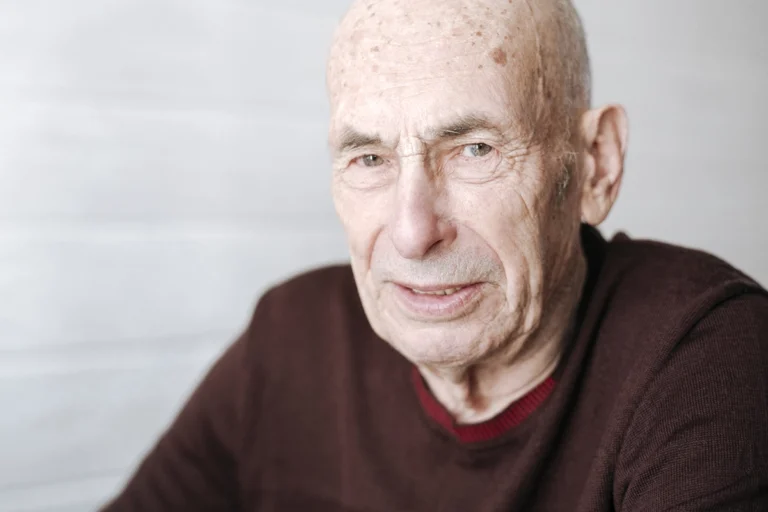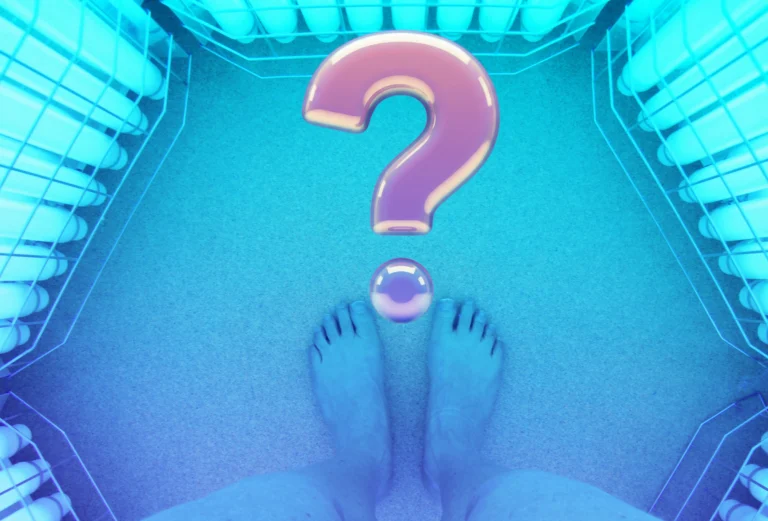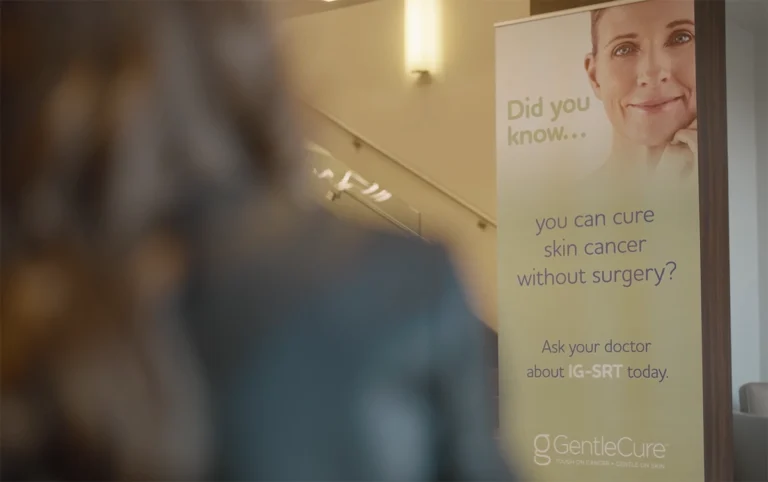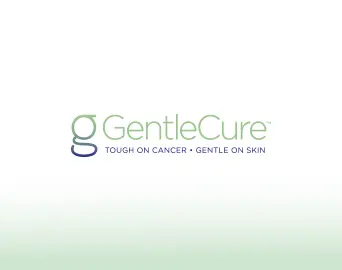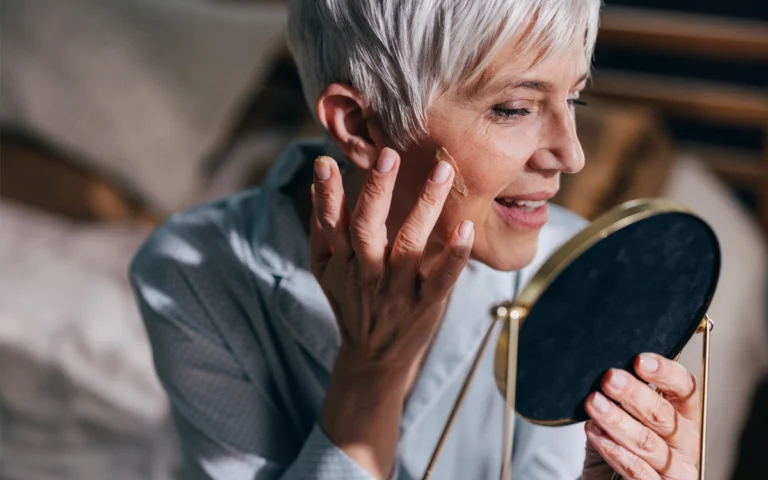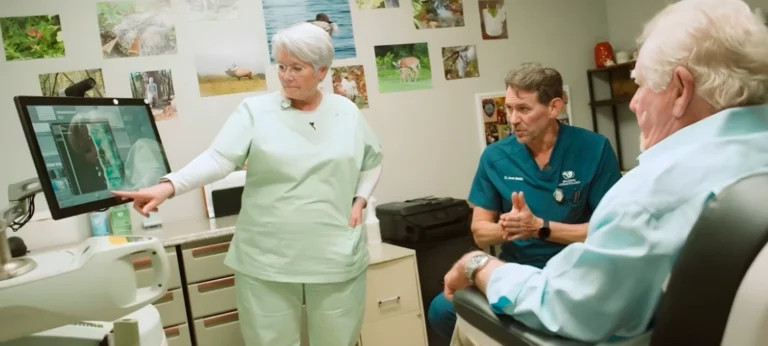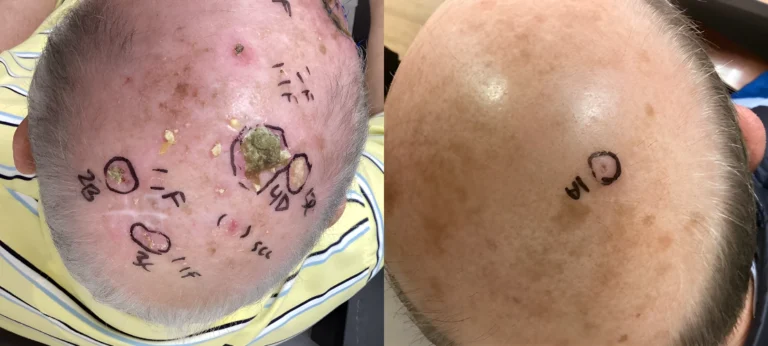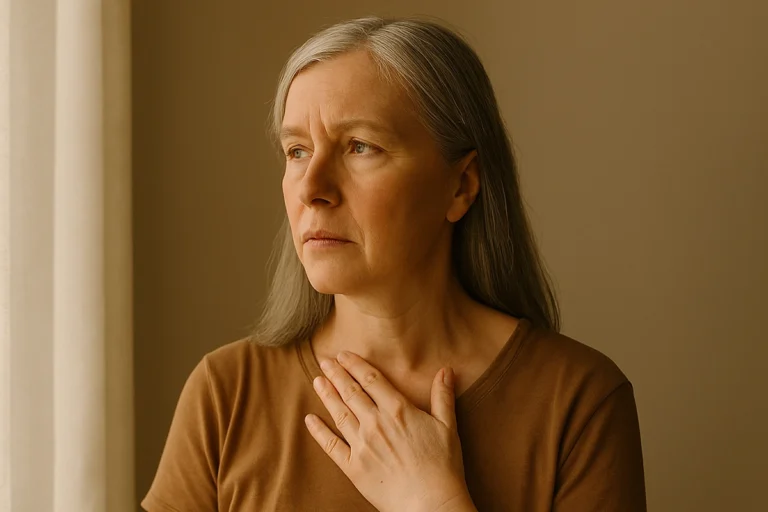What Is Blue Light Therapy?
Blue light therapy, also called photodynamic therapy (PDT), is a non-surgical treatment used for certain skin conditions, including pre-cancerous lesions and early-stage skin cancers. It works by applying a light-sensitive medication to the skin, which is then activated by a specialized blue light. This process destroys abnormal or cancerous cells while leaving surrounding healthy tissue intact.
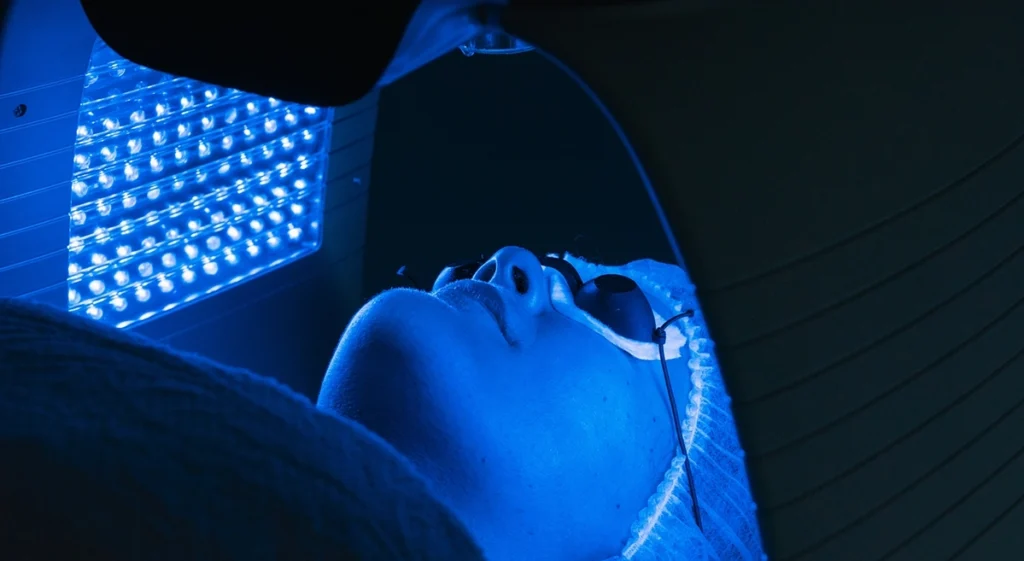
Blue light therapy is most often used for actinic keratoses (AKs)—rough, scaly patches on sun-exposed skin that can sometimes progress into squamous cell skin cancer. In some cases, it may also be used for very early basal cell skin cancers, but it is not recommended for melanoma.
How Does Blue Light Therapy Work?
The process typically follows three steps:
- Preparation – A photosensitizing agent (such as aminolevulinic acid, or ALA) is applied to the affected area.
- Absorption – The skin absorbs the medication, usually over 1–3 hours.
- Activation – The area is exposed to blue light, which activates the drug and destroys abnormal cells.
Sessions usually last between 15 and 30 minutes, and patients may need multiple treatments depending on the condition being treated.
Conditions Treated with Blue Light Therapy
Blue light therapy is is mainly used for:
- Actinic keratoses (AKs): Pre-cancerous growths caused by sun damage.
- Early superficial basal cell carcinoma (BCC): In some cases, for patients who cannot undergo surgery.
- Other skin conditions: Including certain types of acne and sun damage (though these are cosmetic uses).
👉 Not recommended for: Melanoma or deeper nonmelanoma skin cancers.
Benefits of Blue Light Therapy
Patients and dermatologists often consider blue light therapy because it is:
- Non-surgical: No cutting or stitches.
- Outpatient-based: Performed in a dermatologist’s office.
- Quick recovery: Minimal downtime compared to surgery.
- Cosmetic-friendly: Leaves little or no scarring, which is important for visible areas.
- Preventive: Treats precancerous lesions before they progress.
Risks and Side Effects
While generally safe, blue light therapy does carry risks. Common side effects include:
- Redness, peeling, or swelling at the treated site.
- Temporary burning or stinging during light exposure.
- Increased sun sensitivity for several days after treatment.
- Rarely, blistering or infection.
Because of these side effects, patients are usually advised to avoid direct sunlight and bright indoor light for at least 48 hours after treatment.
Blue Light Therapy vs. Other Skin Cancer Treatments
Choosing the right treatment depends on the type and stage of skin cancer:
- Blue Light Therapy vs Mohs Surgery
Mohs surgery has higher cure rates for basal and squamous cell skin cancers but requires cutting and healing time. Blue light is less invasive but not as effective for deeper cancers. - Blue Light Therapy vs IGSRT (Image-Guided Superficial Radiation Therapy)
offers no cutting and no surgical scarring for common skin cancers. Unlike blue light therapy, which is mainly effective for actinic keratoses and very superficial lesions, IGSRT is designed to treat basal and squamous cell skin cancers with real-time imaging that helps providers deliver radiation precisely to the lesion site while sparing healthy tissue.
👉 While blue light therapy is effective for actinic keratoses and some superficial cases, IGSRT provides a broader, image-guided option for treating confirmed basal and squamous cell skin cancers. Many patients and providers choose IGSRT because it is non-surgical, highly precise, and there is no surgical scarring.
Blue Light Therapy vs. IGSRT: Key Differences
Here’s how Blue Light Therapy compares to GentleCure/IGSRT,
| Feature | Blue Light Therapy (Photodynamic Therapy) | IGSRT (Image-Guided Superficial Radiotherapy) |
| Best for | Actinic keratoses (precancerous lesions) and very early, superficial basal cell skin cancers | Non-melanoma skin cancers (basal cell and squamous cell) |
| How it works | Photosensitizing cream applied to skin, then activated by blue light | Low-dose radiation directed at cancerous cells, guided by ultrasound imaging |
| Effectiveness | Effective for surface-level growths; not suitable for invasive skin cancers | Effective for treating nonmelanoma skin cancers (basal cell and squamous cell), with imaging guidance to ensure precise treatment |
| Sessions required | Typically multiple treatments over several weeks | Treatment typically involves 18 to 25 short treatment sessions (about 10 minutes each) over the course of several weeks. |
| Side effects | Redness, peeling, stinging, temporary light sensitivity | Mild skin redness or irritation at the treatment site; can be cared for by your doctor and usually go away within 2 to 6 weeks after treatment ends |
| Scarring risk | Minimal to none | None — preserves healthy tissue |
| Downtime | Avoid sunlight/bright light for 48 hours after treatment | No special recovery time required |
| Availability | Commonly offered by dermatology practices | Available nationwide at practices offering GentleCure |
| Not suitable for | Melanoma, advanced basal cell or squamous cell cancers | Melanoma or metastatic cancers |
FAQs About Blue Light Therapy
Yes, but it is most effective for actinic keratoses and some superficial basal cell skin cancers. It is not recommended for melanoma or deeper cancers.
A session usually lasts 15–30 minutes, but preparation can add a few hours. Patients may need multiple sessions for best results.
Redness, peeling, burning, and sun sensitivity are the most common. Serious complications are rare.
For Common Skin Cancer, Choose a Surgery-Free Option with GentleCure™
At GentleCure™, we use Image-Guided Superficial Radiotherapy (IGSRT) to treat basal and squamous cell skin cancers safely, effectively, and without surgical scarring.
If you’ve been considering a surgery-free treatment option,, or want to understand whether IGSRT is right for you, our Skin Cancer Information Specialists are here to help you.
👉 Call us at 855-936-4411 or contact us online to learn more.
